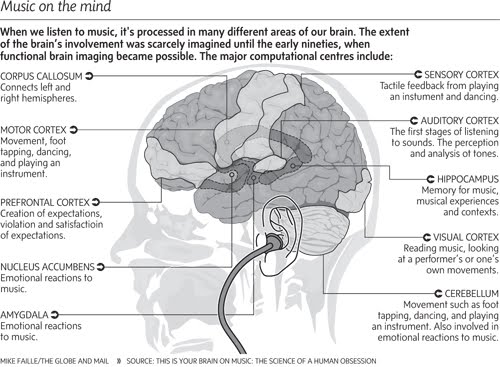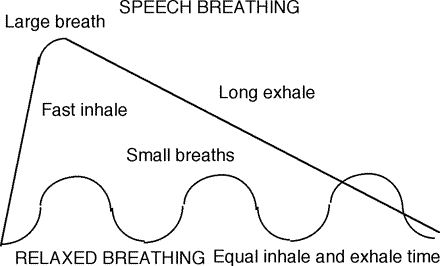Singing without a Stutter: Music as a Speech Therapy Tool
We all know the brain works in mysterious ways, but every so often we are reminded of just how magical it is. This is particularly so when we examine it’s response to music in populations with Language disorders as a speech therapy technique. By now, you may have seen this video of American Idol contestant Lazaro Arbos’ audition. While his rendition of “Bridge Over Troubled Water” is astounding enough, watch what happens to his rather severe stutter when he begins to sing:
What’s so special about music?
Lazaro isn’t the first to find that singing can help with language difficulties. Melodic Intonation Therapy has been a useful treatment technique for Speech Pathologists for many years and was recently highlighted as a major component of Congresswoman Gabby Gifford’s recovery. Music is used in the treatment of developmental and acquired disorders including Autism, stuttering, prematurity and brain injury patients.
According the American Music Therapy Association (AMTA), music therapy “is the clinical and evidence-based use of music interventions to accomplish individualized goals within a therapeutic relationship by a credentialed professional who has completed an approved music therapy program.”
Elements of Music and the Brain
We know that music has special qualities that excite different areas of the brain. Some of these are quite similar to language and include prosody, stress, pitch and inflection. Therefore when we participate in or hear music, many parts of the brain must work together.
Music stimulates the:
- Auditory cortex (notes, melody, speed, frequencies in song)
- Cerebrum (recalling the lyrics, using memory)
- Cerebellum (coordinating body movements and muscles)
- Limbic system (emotions in lyrics or melodies)
Singing provides increased phonation duration (holding out a sound for a long time), intonation, and has a shared auditory-motor pathway with speech. One unique feature of music is its rhythm – the rhythm we find in song is inherently predictable and may help cue what’s coming next.
For people who stutter, like Lazaro, in particular, this timing cue might be a crucial component. Because rhythm is structured and you can anticipate it, it helps provide cues that can facilitate the timing and coordination of speech production.
With a song, the words and melody are constant, never changing. Conversation, on the other hand is always changing and most people aren’t able to plan exactly what they’re going to say. The role of memorization and recall of songs may also help alleviate stress and anxiety of having to produce spontaneous speech.
These are all helpful elements to a treatment program for persons who stutter where techniques typically include developing and strengthening the breath support and oral-motor coordination for speech.
Can this be a cure?
Unfortunately, there is no known “cure” for stuttering. Research literature has only shown the benefits of these techniques to have short-term effects. However, using song and live music in therapy can be helpful in promoting relaxation, reducing the rate of speech (pacing) and providing a comfortable environment to practice and gain confidence in speech. The confidence building component of singing stutter-free can be a strong avenue for patients with anxiety or distress related to disfluency. Let the American Idol clip be an inspiration for kids who might be struggling with self confidence or anxiety surrounding their stutter. Music can open doors for these kids, just like Lazaro.





